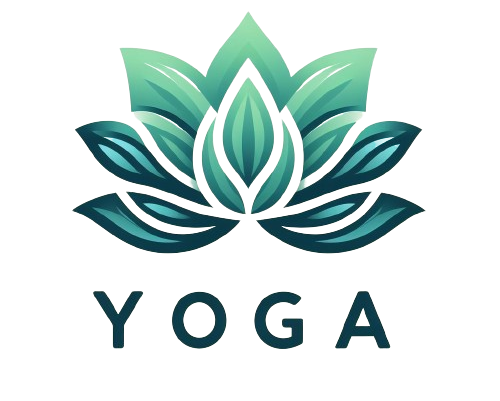We’ve all heard that staying active is important for a buzzing life, especially when we’re in our roaring twenties. Hitting the treadmill isn’t the only way to keep that ticker in top condition. Yoga, the ancient practice often linked with calming the mind, also has some nifty tricks up its sleeve for heart health.
Imagine this – your heart pumping at a steady, unruffled pace as you glide through a series of stretches and poses. Yoga is about creating a rhythm in your body that beats in tune with your heart. By focusing on breath control and slow movements, yoga helps in reducing blood pressure, which is like giving your cardiovascular system a low-key spa day.
Breaking Down the Benefits
Engaging in regular yoga practice has been shown to be beneficial in maintaining healthy cholesterol levels, which is essential for cardiovascular health. When we talk about cholesterol, we refer to the delicate balance between the low-density lipoprotein (LDL), often labeled as the ‘bad’ cholesterol, and the high-density lipoprotein (HDL), known as the ‘good’ cholesterol. Regular yoga helps to regulate this balance by potentially reducing the levels of LDL, which, when too high, can lead to plaque buildup in artery walls and result in heart disease. At the same time, yoga can help increase the levels of HDL, which has a protective effect by carrying cholesterol away from the arteries and back to the liver for processing and removal from the body. This regulation of cholesterol helps in maintaining a healthy heart and reduces the risk of stroke and other cardiovascular diseases. The act of performing yoga with its various asanas (poses) and breathing techniques is important in fostering an environment that promotes balanced cholesterol levels, contributing to overall heart health and preventing the onset of related diseases.
Poses that Make Your Heart Go ‘Yay!’
- Mountain Pose: stand tall, breathe deep. Simple? Yes, but it’s the ABC of yoga and sets the tone for a heart-wise session.
- Warrior Pose: feel powerful, build leg strength, and give your circulation a wake-up call, all while taking it easy on the heart.
- Bridge Pose: it’s like a gentle hug for your heart, increasing lung capacity and improving respiratory functions.
The Rhythmic Breathing Bonus

The practice of controlled breathing during yoga, often referred to as pranayama, is a powerful tool that goes unnoticed in its role in promoting cardiovascular health. This rhythmic breathing is a mechanism to prevent you from keeling over during challenging poses and stabilizing your heart rate. When confronted with day-to-day stressors, our heart rate can spike, leading to increased blood pressure and strain on the heart. Pranayama during yoga equips you with the ability to consciously control your breathing, which in turn can calm the nervous system and encourage your heart rate to settle into a more peaceful rhythm.
The process of deeply inhaling and exhaling is akin to bringing a bounty of gifts to a celebration – in this case, the party is your heart, and the gift is oxygen. This element is the lifeblood of your cells and important for maintaining a strong, healthy heart. Through yoga, attention is paid to taking fuller, deeper breaths, maximizing the oxygen intake with each inhalation. This increased oxygen supply does more than invigorate the body, it ensures that your heart, the diligent engine that works ceaselessly to circulate blood throughout your system, is well-nourished. By channeling more oxygen into the bloodstream, you equip your heart with the necessary resources to function efficiently, thereby reducing unnecessary stress and allowing it to pump effectively and without any added drama.
Yoga’s Buffet of Styles for Every Mood
The world of yoga is as diverse as the spectrum of human emotions, offering a myriad of styles each designed to cater to different moods and physical needs. Just like reaching for a specific flavor of ice cream to suit your taste buds, you can select a style of yoga that complements your current state of mind. If you’re in need of some calming influence, a burst of energy, or a dose of daring, there’s a form of yoga that aligns perfectly with your desires.
For those times when your spirit seeks tranquility or perhaps you’re just beginning your yoga journey, Hatha Yoga serves as the ideal variant. Renowned for its gentle pace and focus on individual poses, Hatha is the embodiment of patience and mindfulness, allowing practitioners to find peace and stability in both body and mind. It’s the kind of practice that entices you to unwind as you transition from one posture to another with deliberate and unhurried grace.
When your energy levels feel like they need a little synchronization with your inner rhythm, Vinyasa Yoga offers a dynamic that keeps pace with the natural cycle of your breath. This style weaves poses into a continuous flow, creating a dance-like sequence that is both meditative and rejuvenating. Vinyasa strikes a harmonious balance, it injects a lively spark into your routine without overwhelming the senses, making it a versatile choice for many.
And then there’s Ashtanga Yoga for those who crave a challenge that’s as mentally engaging as it is physically demanding. This style doesn’t shy away from intensity, it embraces it. It’s a practice steeped in tradition and discipline, offering a steady sequence of poses that build heat, endurance, and focus. Ashtanga is the physical equivalent of a strong espresso shot—giving your heart a robust and spirited workout that leaves you feeling both invigorated and profoundly connected to your inner strength.
Partnering Cardio with Yoga for the Win
The adage that variety is the spice of life extends with particular relevance to the realm of physical fitness. Integrating yoga into a workout routine that already includes cardiovascular exercise creates a holistic synergy, ensuring comprehensive cardiac health and endurance. Cardiovascular workouts tend to focus on pushing the heart rate up, challenging the heart like a sprinter lunging towards the finish line or a marathon runner pacing through miles. These high-intensity activities enhance heart strength and lung capacity, ensuring the cardiovascular system is robust and efficient.
Incorporating yoga into the fitness equation invites the body to indulge in the art of recovery and balance. After a day of pulsating cardio work, transitioning to yoga allows the heart to settle into a rhythm that’s less about speed and more about depth and recovery. In this tranquil realm, muscles find relief from the intensity of cardio workouts through yoga’s expansive stretches and restorative postures. The heart, having been tested by the vigorous demands of cardio, finds sanctuary in the slower, more deliberate cadence of a yoga session.
Continuing to weave the fabric of fitness with alternating patterns of cardio and yoga, one may find themselves returning to a more vigorous Vinyasa flow after a day of recovery, perhaps integrating the elevated heart rate of cardio within the fluid movements of yoga. This crossover brings elements from both worlds into play, elevating the heartbeat in a rhythm that resonates with the pace of the breath, and challenging muscles with dynamism as well as stability.
